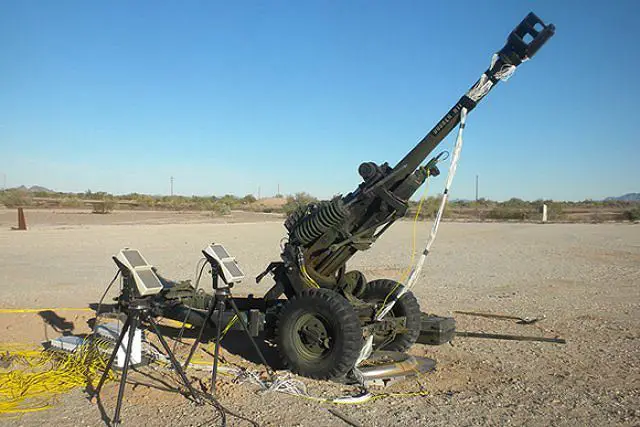|
|
|||
|
Military Defense Industry Technology - M119 105mm howitzer
|
|||
|
|
|||
| U.S. army engineers have designed a new muzzle break LBOP for M119 105mm towed howitzer. | |||
|
U.S. Engineers from Watervliet Arsenal have designed a 105 mm low blast overpressure muzzle brake, or LBOP. It's the first large caliber muzzle brake designed specifically for an existing gun system. Muzzle brake designs for large caliber have historically been for brand new cannon designs, but the LBOP was designed around the existing M119 howitzer platform.
|
|||
|
|
|||
 The M119 105mm howitzer, outfitted with the LBOP muzzle brake, ready for live-fire testing at the Yuma Proving Ground in Arizona. (Photo Credit: US Army website) The M119 105mm howitzer, outfitted with the LBOP muzzle brake, ready for live-fire testing at the Yuma Proving Ground in Arizona. (Photo Credit: US Army website) |
|||
|
|
|||
|
The designs are being developed at the Armament Research, Development and Engineering Center's Benet Laboratories at Watervliet.
A muzzle brake achieves recoil reduction by redirecting propellant gasses rearward, explained Robert Carson, LBOP design engineer. It's similar to the thrust reversal used during the landing of a jet plane when the jet plane's engines redirect engine exhaust forward to reduce the jet's forward momentum. The more efficiently a muzzle break redirects propellant gasses to the rear of the gun, Carson explained, the greater the reduction in the recoil. "It is important to the warfighter because it allows them to be more lethal by sustaining [a] higher number of rounds fired per day," said Alan Ng, LBOP program lead, "because the blast overpressure from this new muzzle brake that is experienced by the artilleryman is significantly lower."
|
|||
|
|
|||
 An Army Soldier assigned to Alpha Battery, 1-143rd Field Artillery, prepares to test fire an M119A3 105mm Howitzer at Camp Roberts, Calif., January 18, 2017. An Army Soldier assigned to Alpha Battery, 1-143rd Field Artillery, prepares to test fire an M119A3 105mm Howitzer at Camp Roberts, Calif., January 18, 2017. |
|||
|
|
|||
|
The LBOP muzzle break also reduces the auditory and non-auditory health hazards -- compared to the current muzzle brake on the M119, according to Carson.
"The reduction in impulse noise [blast overpressure] varies between 13 percent to 48 percent at various quadrant elevations and crew locations," Ng said. The 105 mm LBOP muzzle brake would be used with the M119 Towed Howitzer during shorter range howitzer missions and training. The M119 Towed Howitzer is designed specifically for this 105 mm M20 cannon, but the technology can be engineered for other cannon platforms, such as a 155 mm.The M119 is a lightweight 105mm towed howitzer in service with the US Army. The howitzer provides direct and indirect fire support to the forces deployed in combined arms operations. The M119A2 is equipped with with a digital fire control system that includes an inertial navigation unit, guided-precision system technology and other features that will give the weapon the ability to determine its precise geographical location on its own. The digitized M119A2 includes a GPS-aided Inertial Navigation Unit, or INU, that knows where the weapon is at all times, so optical sites are not needed to determine location. The INU allows the Soldier to ready the howitzer and fire the first round in two to three minutes. The latest version, the M119A3 has received several significant upgrades that improve performance, maintainability and safety. The most recent upgrades incorporated into the current configuration include digital fire control; increased low temperature capability, from -25 to -51 degrees Fahrenheit; and the M20 breech. |
|||














